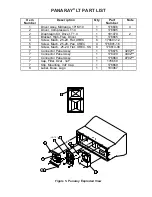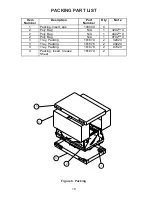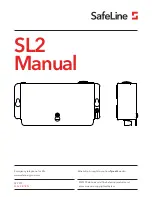
14
TEST PROCEDURES
1. Rub and Tick Test
1.1 Apply an 8Vrms, 10Hz signal to the
input terminals of the speaker.
1.2 No extraneous noise such as rubbing,
scraping or ticking should be heard.
2. Phase Test
2.1 Disconnect the connectors at the V-4
or M-10 terminals. Momentarily apply
8
±
1Vdc to the terminals. Observe polarity
when connecting the dc power supply. All
the drivers should move outward.
3. Frequency Power Sweep Test
3.1 Apply an 8Vrms, 10Hz signal to the
speaker input terminals.
3.2 Sweep the Loudspeaker from 10Hz to
2kHz.
3.3 Lower the applied voltage to 4Vrms
and sweep the loudspeaker from 1kHz to
5kHz.
3.4 Listen for any buzzes, rattles or other
extraneous noises from the loudspeaker.
High-Frequency -
Mid-Range -
High-Fre
Mid-Range +
pin 1 +
pin 2 +
pin 1 -
pin 2 -
JUMPER
JUMPER
IF JUMPERS ARE USED
CONNECT TEST CABLES
HERE AT THE TERMINAL
BLOCK.
IF THE JUMPERS ARE NOT USED
CONNECT TO THE TERMINAL BLOCK
ACCORDING TO THIS PIN LAY-OUT.
Figure 3. Connection Diagram
Note: Connect the cables to the terminal
block as shown in Figure 3.




































